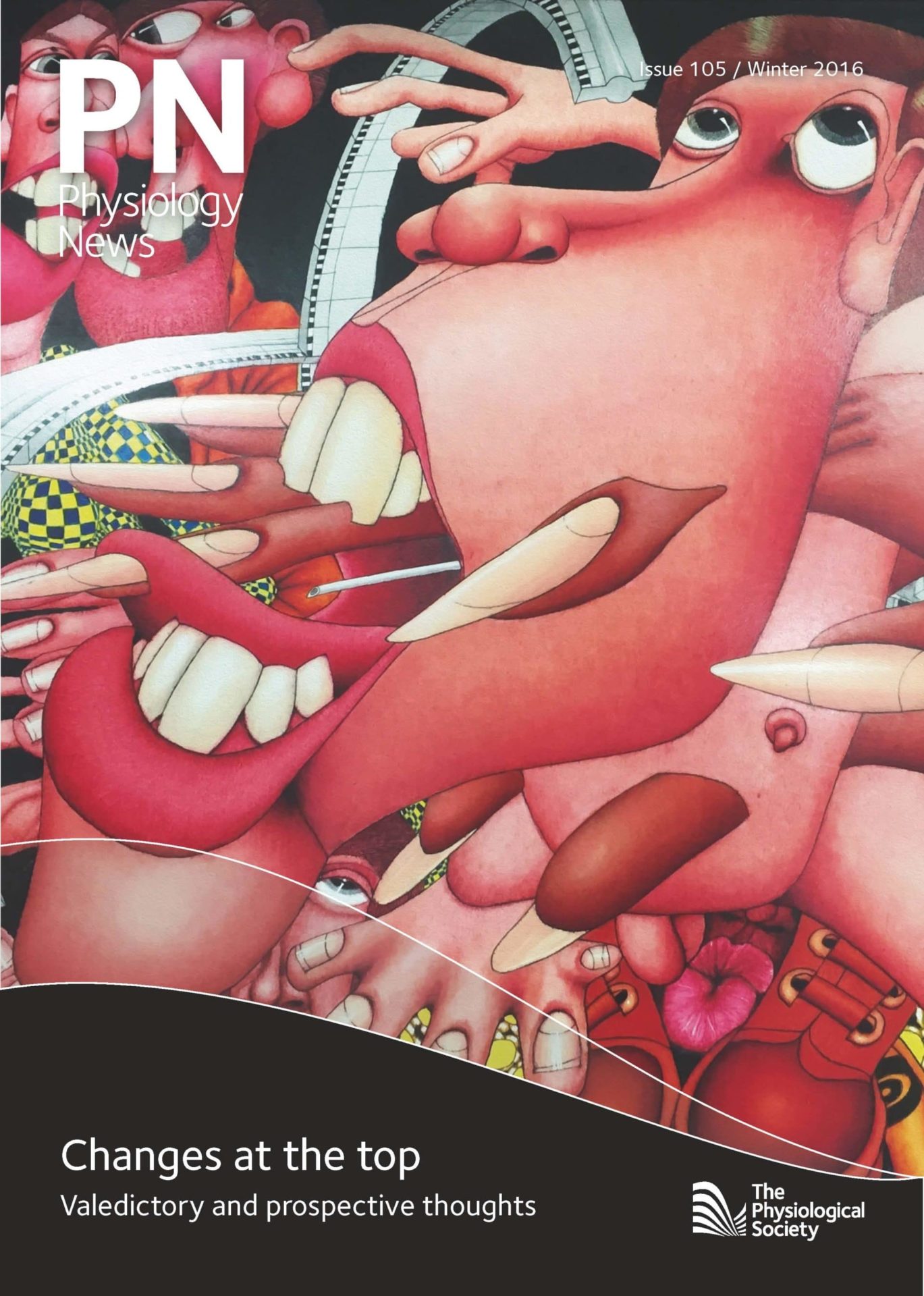
Physiology News Magazine
Mistakes in minutes
News and Views
Mistakes in minutes
News and Views
Tilli Tansey
QMUL, Honorary Archivist, The Physiological Society
https://doi.org/10.36866/pn.105.6b
I write in some dismay concerning the ‘From the Archives’ section of Physiology News 104. There are several typos in the transcriptions, the most noticeable of which are the mis-spellings of the names of a number of Society members – RC Garry, E Denton and M de Burgh Daly all appear in more than one guise. However, what gave me especial pause for thought was the list of Nobel Laureates appended to the Minutes of the meeting held at Bart’s in December 1966 – and incidentally John Gillespie from Glasgow was the Meetings Secretary at the time, not Eric Denton. At the dinner in the Great Hall (also appearing as the mysterious great hail), HP Gilding noted the recent award of the Nobel Prize to an Honorary Member, F Peyton Rous. Rous, an American pathologist then aged 87, was finally awarded the Prize for work on sarcoma virus done 40 years earlier, and three years after his son-in-law Sir Alan Hodgkin had shared the same prize. Gilding remarked that it ‘brought the number of present members of The Society who were Prize winners to *14’, an asterisked list naming all 14. That list, as reproduced in PN, is however inaccurate, and intrigued as to whether the mistakes are of contemporary or more recent vintage, I consulted the original Minutes Book in the Society Archives.
One mistake is clearly of recent origin – ‘Lord Plorey’ is correctly recorded in the Minutes as Lord Florey, the Oxford biochemist and pathologist, who shared the 1945 Nobel Prize for Physiology or Medicine with Ernst Chain and Alexander Fleming for their work on the discovery, isolation and production of penicillin.
The second mistake is more glaring and is in the original. The first name on the list is that of Professor Charles (always known as Charley) Best. As a young medical student Best worked with Frederick Banting in Toronto on the isolation and therapeutic use of insulin for diabetes mellitus. But he did not share the 1922 Prize in Physiology or Medicine with Banting – that honour went to their boss, the Professor of Physiology John Macleod, an expert in carbohydrate metabolism, who had supported the work with space, resources and advice. The exclusion of Best created an uproar at the time, and somewhat ostentatiously, Banting shared his half of the Prize with the younger man. Macleod responded by sharing his half with James Collip, the biochemist who had undertaken the extensive purification work necessary to turn Banting and Best’s crude canine pancreatic extracts into therapeutic samples. Hostility towards Macleod in Toronto, much of it fuelled by Banting, continued to such an extent that when he finally left in 1928 to return to his native Aberdeen he is reported to have very publicly wiped his boots so as to ‘wipe away the dirt of this city’ (Bliss, M 1982 The discovery of insulin. University of Chicago Press). Macleod, elected to the Physiological Society in 1900, died just a few years after his arrival in Scotland.
So the total number of Physiological Society members holding a Nobel Prize in 1966 was 13, rather than 14. However, amongst the living Laureates in 1966 was a former member of the Society. Elected a Member in 1918, John Boyd Orr was a nutritionist and politician, who resigned from the Society in 1949 when he moved into business activities upon his retirement as Director of the United Nations Food and Agriculture Organization (FAO). That same year however he was awarded the Nobel Prize, but not for Physiology or Medicine, but for Peace for his work at the FAO. He rarely, if ever, appears on lists of Physiological Society members who became Nobel Laureates. Note that one of this year’s winners in Physics is the son of Hans Kosterlitz (elected 1939; Honorary Member 1984).
Editor’s Note: My apologies. Future transcripts will be sent to Tilli before publication!
